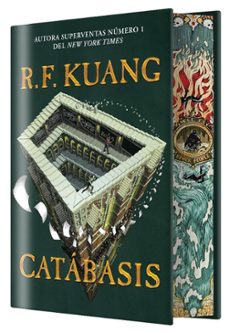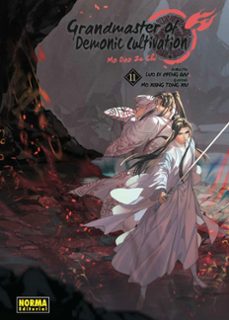Imprescindibles
Ficción
Literatura ContemporáneaEstudios literariosClásicosCuentosPoesíaTeatroLibros de bolsillo Sagas literarias
Géneros literarios Novela romántica y eróticaNovela negraNovela históricaNarrativa fantásticaNovela de ciencia ficciónNovela de terrorNarrativa de humorNarrativa de viajes
No Ficción
Ciencias y tecnología BiologíaCienciasCiencias naturalesDivulgación científicaInformáticaIngenieríaMatemáticasMedicinaSalud y dietas Formación Idiomas Estilo de vida Libros de CocinaGuías de viajeNarrativa de viajesDeportesLibros de JuegosManualidades
Humanidades Autoayuda y espiritualidadCiencias humanasDerechoEconomía y EmpresaPsicología y PedagogíaFilosofíaSociología Filología BiblioteconomíaEstudios filológicosEstudios lingüísticosEstudios literariosHistoria y crítica de la Literatura
Infantil
Juvenil
Cómic y Manga
Novela gráfica Novela gráfica americanaNovela gráfica europeaNovela gráfica de otros países Personajes, series y sagas Series y sagasStar Wars Superhéroes Cómics DCCómics MarvelCómics otros superhéroesCómics Valiant
eBooks
Literatura ContemporáneaNarrativa fantásticaNovela de ciencia ficciónNovela de terrorNovela históricaNovela negraNovela romántica y erótica Juvenil Más de 13 añosMás de 15 años Infantil eBooks infantiles
Humanidades Autoayuda y espiritualidadCiencias humanasEconomía y EmpresaPsicología y PedagogíaFilosofía Historia Historia de EspañaHistoria Universal Arte CineMúsicaHistoria del arte
Ciencia y tecnología Ciencias naturalesDivulgación científicaMedicinaSalud y dietas Filología Estudios lingüísticosEstudios literariosHistoria y crítica de la Literatura Estilo de vida CocinaGuías de viajeOcio y deportes
GAVIN WEIGHTMAN
Recibe novedades de GAVIN WEIGHTMAN directamente en tu email
Filtros
Del 1 al 3 de 3
Atlantic Books 9780857893000
In the early 1870s a night-time view over Britain would have revealed towns lit by the warm glow of gas and oil lamps and a much darker countryside, the only light emanating from the fiery sparks of late running steam trains. However, by the end of this same decade that Victorian Britons would experience a new brilliance in their streets, town halls and other public places. Electricity had come to town. In Children of Light, Gavin Weightman brings to life not just the most celebrated electrical pioneers, such as Thomas Edison, but also the men such as Rookes Crompton who lit Henley Regatta in 1879; Sebastian Ziani de Ferranti, a direct descendant of one of the Venetian Doges, who built Britains first major power station on the Thames at Deptford; and Anglo-Irish aristocrat, Charles Parsons inventor of the steam turbine, which revolutionised the generating of electricity.Children of Light takes in the electrification of the tramways and the London Underground, the transformation of the home with labour saving devices, the vital modernising of industry during two world wars, and the battles between environmentalists and the promoters of electric power, which began in earnest when the first pylons went up. As Children of Light shows, the electric revolution has brought us luxury that would have astonished the Victorians, but at a price we are still having to pay.
Ver más
eBook
JOHN MURRAY 9780719564116
Without the Thames there would be no London. From earliest times, the needs of the city - whether for stone, gold or coal, for hay to feed livestock or food, or wine and spices for human beings - were supplied from the river, as the fierce tides brought ships upstream or carried them down again. Only with the age of trunk road and rail did London s global importance as a port diminish. Even after that the tides continued to drive the great power stations.This fascinating book is the best possible introduction to the water and its ways, the buildings that line the banks, and the people who lived by the river, their customs and ancient knowledge. The Thames is here in every guise - highway and barrier, source of power and source of life, place of entertainment, port, and drainpipe.
Ver más
Tapa dura
Editorial Ariel 9788434453982
La Revolución Industrial se presenta normalmente como la historia de las máquinas o del implacable proceso de innovación que arranca del pensamiento científico forjado en el Siglo de las Luces. Este apasionante libro se centra en los entusiastas personajes que contribuyeron con sus innovadoras ideas a transformar el mundo. El autor nos presenta a una sucesión de pioneros geniales, mentes inquietas, inventores visionarios, brillantes ingenieros, industriales emprendedores y hábiles artesanos, incluyendo a personajes fundamentales como Watt, Edison, Trevithick, Stevenson, Wedgwood, Daimler o Bessemer y a otros menos conocidos pero igualmente fascinantes.
Ver más
Tapa dura
Del 1 al 3 de 3






























